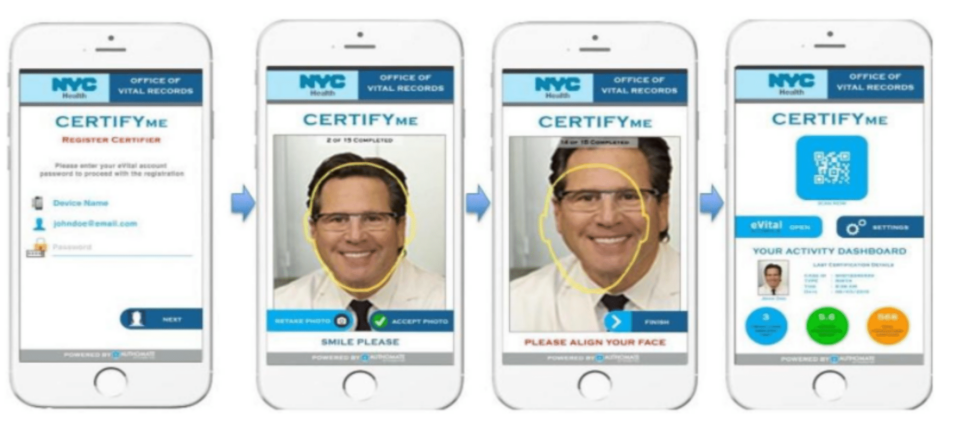What to Look for in a Vital Records Management System (VRMS)
What to Look for in a Vital Records Management System (VRMS)
The COVID-19 pandemic exposed glaring inefficiencies in existing methods of vital records management, including a lag in cause-of-death reporting and delays in providing families with vital records for their loved ones.
But with federal pandemic relief funding on the way, now is the time for state and local governments to modernize their vital records management systems (VRMS) and reap the benefits – from improving resident experiences to enhancing interoperability to providing more robust data security, privacy, and confidentiality.
But what should governments look for in a VRMS? Here are four capabilities to consider.
1. Portability and mobile experiences
Residents are increasingly accustomed to real-time mobile digital interactions and expect similar experiences when engaging with government services. Cloud-based vital records management systems are key to delivering these experiences. With modernized VRMS, residents can log into a portal and make a request or check the status of vital records like marriage and divorce records as well as birth and death certificates. This is a far better experience than a constituent having to wait on hold for someone at an agency to call them back.
Mobile VRMS can also reduce staff workload and eliminate delays in processing birth and death information when doctors, funeral directors, and coroners are off-site.
For instance, New York City’s Bureau of Vital Statistics (BVS) has implemented a mobile case certification solution called eVital with the app, users simply use their smartphones to securely and remotely certify cases, resulting in fewer trips to the Health Department to submit fingerprints.

With eVital’s facial recognition capability and human-centered design, certification is quick and easy. It has proved a critical tool in reducing backlog, providing reliable and timely certifications, and ensuring seamless, efficient customer service.
The same mobile scanning technology is also being used by hospital staff in the city to easily submit parentage documents and improve auditability.
2. Scalable to meet emergent need
Vital records departments see a considerable intake of information daily, so it’s crucial that any VRMS can scale to handle that demand.
For example, New York City’s BVS registers approximately 120,000 births, 50,000 deaths, and 9,000 fetal deaths per year. It also amends 50,000 records and issues nearly one million certified copies of birth and death certificates.
This workload increased significantly during the early months of the pandemic. As the death rate in New York City escalated, authorities needed to identify and track the deceased individuals rapidly and efficiently – whether in a funeral home or medical facility. BVS quickly responded and worked with the Office of the Chief Medical Examiner to enhance the eVital system interface to help the city account for the deceased and process a surge in death certifications.
Importantly, because eVital is a software-as-a-service (SaaS) solution, the system is future-proofed to handle emergent need at scale without the need for additional software or hardware – saving the city additional expenditure during times of critical need.
3. Security and fraud detection
Cyber attacks in the public sector are on the rise. In fact, 66% of breaches are attributed to cyber espionage in public sector organizations – often targeting vital records with the intent to conduct identity fraud. As these attacks become more prevalent, vital records don’t just need to be better managed and organized; they need to be protected.
While many state and local governments require that an authorized individual authenticates new births and deaths, this paper-based check in a box approach is difficult to audit and verify and therefore susceptible to fraud.
Agencies should consider a modern VRMS that adds a layer of verification using biometrics and facial recognition technology. These checks and balances ensure the right individual is certifying the case – not just any user who has access to the system, such as a bad actor who has infiltrated the agency’s network.
To ensure resident data is always protected, the system must also incorporate additional layers of security, including role-based access control and secure data transmission. The addition of secure paper tracking can also allow agencies to automatically track certificates from the minute they enter the agency to the minute they leave.
4. Seamless interoperability with agency systems
A fundamental limitation of legacy vital records management is that multiple procedures and systems are required to complete submission processes – many of them entirely paper-based. Even when electronic processes are introduced, these documents must be manually scanned and are often reviewed in separate electronic systems before they are signed off. It’s a process that is riddled with bottlenecks that can delay reporting.
Agencies can address these challenges with a modern, user-friendly VRMS that integrates multiple parallel systems to ensure data interoperability. After all, when systems work together seamlessly, agencies can break down barriers and ensure data flows more freely. With optimized workflows, doctors, medical examiners, and coroners’ offices can reduce processing times, improve accuracy, and get the information they need.
Federal funding is here, there’s no time to delay
States can no longer afford to delay vital records management modernization. In the current environment, timely and accurate death reporting has become a key priority for the CDC and grieving relatives. Vital records accessibility also ensures continuity of operations, even in the most challenging circumstances.
But even as we emerge from the pandemic, modernization cannot be overlooked. Next-gen VRMS can help lighten the load on state and local agencies, increase interoperability, improve resident experiences, and bolster cybersecurity. At the same time, they eliminate redundant and costly legacy technologies.
If you’re unsure where to start, find a trusted partner for your modernization journey—someone with experience, domain knowledge, and commitment who can help you leverage cutting-edge technology while mitigating risk.

